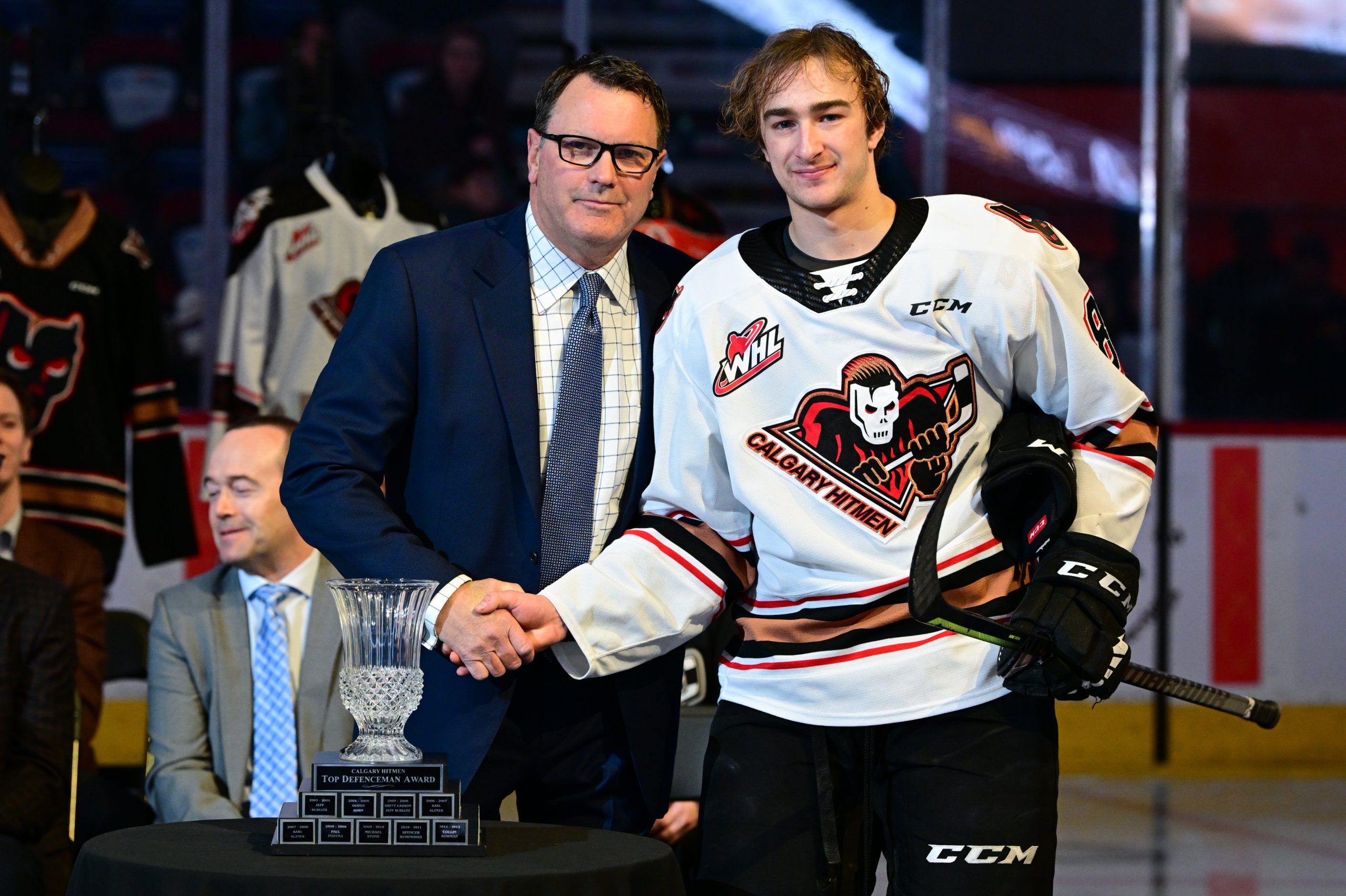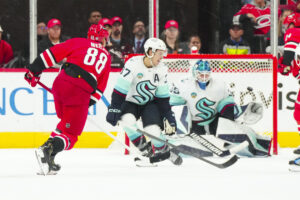The 2022 NHL Draft is fast approaching. The Tampa Bay Lightning are playing in the Finals… again. They elected to keep their first-round draft selection for the first time in what seems like forever. But that hasn’t held them back before, with late round picks like Nikita Kucherov and Brayden Point. With the draft fast approaching, who is a Tampa Bay Lightning draft fit?
Tampa Bay Lightning Draft Fits: WHL Defensemen
The Lightning, since 2010 when Al Murray became their director of amateur scouting and Julien BriseBois became assistant general manager, have drafted 29 defensemen. Out of those 29, six of them came from the WHL. That’s the second-most defensemen taken in one league by the Lightning. The average height and weight of those WHL draftees are 6’1.5” and 205 pounds.
Other averages include roughly 104 games pre-draft, seven goals, 35 assists and 42 points. The most games played among those Lightning draftees out of the WHL belongs to 215 from Teigan Zahn. The least belongs to Quinn Schmeimann at 62. As for goals, the most belongs to Cal Foote with 14, while Libor Hajek has the least with three. Meanwhile, for assists, Foote holds the most there too, with 79. Meanwhile, the least is 23 from Hajek. Obviously, the most points belongs to Foote (93) and the least is Hajek (26). With those parameters set, let’s look at who the Lightning draft fits are. (Also looked at to find fits is league per game stats and world juniors performance.)
Tampa Bay Lightning Draft: Fit #1: Graham Sward, Defenseman, Spokane Chiefs
The top fit amongst WHL eligibles is not Sward. Rather, it is one of Denton Mateychuk or Ben Zloty. However, Mateychuk is very unlikely to fall to the end of the first round, and Zloty is someone this writer does not know a lot about. That said, we settled on Sward. He is ranked 222nd by McKeen’s Hockey and 93rd by Central Scouting among North American skaters.
If he were to be drafted by the Lightning, he wouldn’t set any new highs. But, he would be above average in height (6’2”), WHL games played, goals, assists, points, goals per game, assists per game, and points per game. The things holding him back from being the top fit is the fact he didn’t play in the World Juniors. He would also set a new low in weight (181).
What Does Sward Bring To The Table
Sward would be an interesting late round option. To start, he is a decent skater. He isn’t the fastest, but his edges and stride mechanics are the better qualities in his skating, which makes him a candidate to be better in a few years. Defensively, he is solid and reliable. His positioning is strong, defends the rush well, and has a good active stick to shut down offensive opportunities.
However, while he doesn’t allow offence, he also does not generate offence. Sward’s transitional game is a big work in progress. His lack of creativity and stickhandling, along with his too-conservative style makes him more of an observer of his team’s transition game. Sward also does not have the qualities to be an impact at any higher levels on the transition game. Same thing with his offence. He doesn’t push the pace, he doesn’t step in to get involved, and he doesn’t have the anticipation, IQ, or raw skills to be an impact as a passer from the point. Sward, at best, could be a Radko Gudas type. He is a “safe” pick, in a sense that he can translate to the NHL at a bottom pairing role or a top AHL guy.
Tampa Bay Lightning Draft: Fit #2: Grayden Siepmann, Defenseman, Calgary Hitmen
The next best fit after Sward is Siepmann. He is a little higher rated than Sward, being ranked between 96 (FC Hockey) and 161 (McKeen’s Hockey), while also being ranked 79th by Central Scouting among North American skaters. This season, Siepmann recorded 25 points in 66 games for the Hitmen, along with three points in three games with the Canadian national team at the under-18s.
The Top Defenceman Award, #8 Grayden Siepmann pic.twitter.com/yfquNdR8qU
— Calgary Hitmen (@WHLHitmen) April 19, 2022
If he were to be drafted, he would set new highs in World Juniors goals and points. He would also finish above average World Juniors games played and assists, and WHL goals and goals per game. He is held back from being a better fit due to being below average in WHL games played, points, assists per game, and points per game. Additionally, he would set new lows in height (5’11”), weight (185), and WHL assists.
What Does Siepmann Bring To The Table
Siepmann is an interesting prospect. On the one hand, he is an offensively-oriented defender. He pushes the pace transitionally and can be very effective in that area. His skating is a big reason why. He may not be the fastest or most agile skater, but he is extremely slippery and deceptive, and when watching him carry the puck up ice, it is incredible to watch. Offensively, he steps up every now and again, looking to push the offensive pace. Defensively, he is reliable and smart as well.
However, again, he isn’t the fastest or most agile. With his size, he can get physically bullied, and since he can’t out-skate those hits, he can get caught. Transitionally, he doesn’t have the hands and creativity to match his deceptive skating, which allows players to better read where he is headed. Offensively, his raw tools simply are not there, despite his tendency to be more offensive. His shot is lacking and his passes are predictable and easy to intercept. Meanwhile, his defensive game can get exposed because of his size leading to a lack of reach. Some of his negatives are not coachable, but he can refine some aspects to translate his offensive and transitional abilities.






